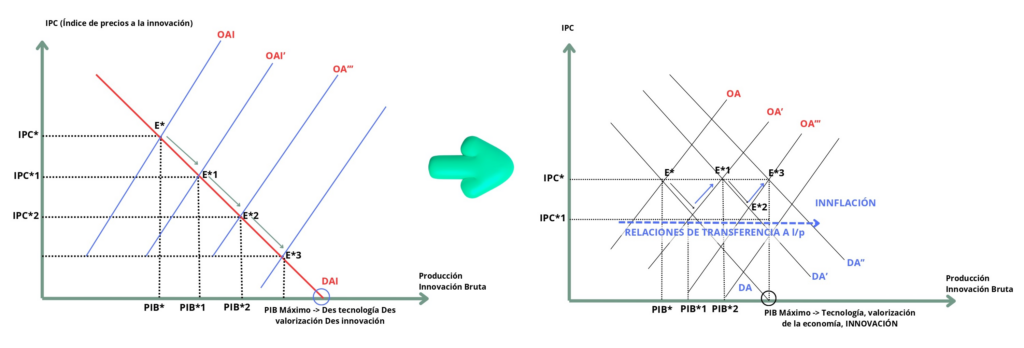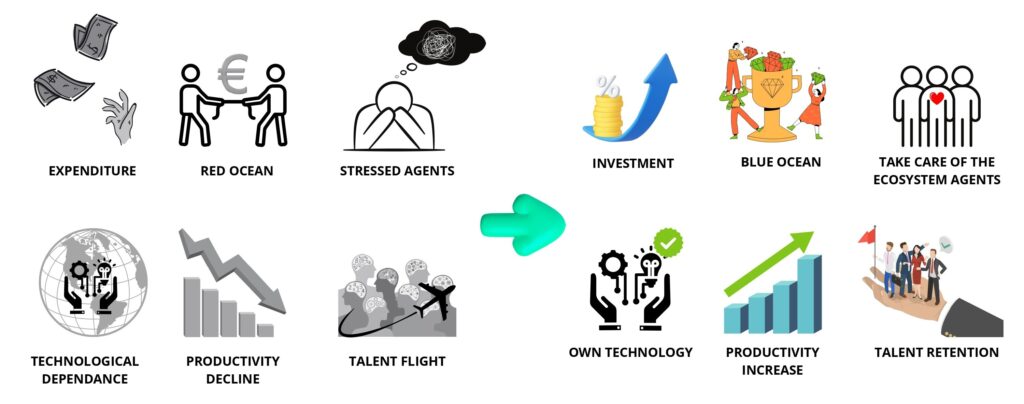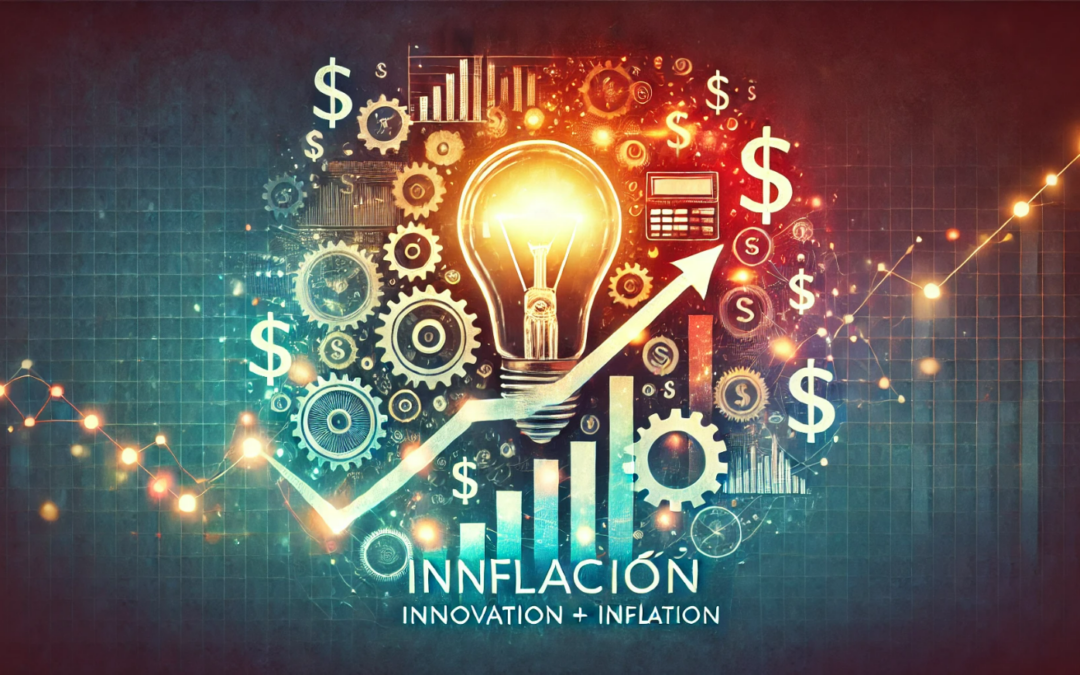‘Innflation’ (innovation + innflation) is the phenomenon whereby an increase in the supply of R&D is not reflected in a reduction in its price because there is a stimulated demand for the purchase of that R&D.

It´s the phenomenon that moves us away from dull innovation systems characterised by continuous price reduction due to oversupply and allows us to have thriving innovation systems characterised by long-term transfer relationships so that the R&D generated is transformed into innovation when successfully exploited.
A dull innovation system, in which the phenomenon of ‘innflation’ doesn´t occur, is characterised by the fact that the public resources allocated to the generation of R&D supply are public expenditure, because the agents that generate that supply are stressed and compete in a red ocean in terms of price. These are innovation systems dependent on the outside world with low and decreasing levels of productivity, characterised by the flight of talent.
“Dull innovation system. Innovation system dependent on the outside world with low and decreasing levels of productivity, characterised by the flight of talent.”

It is therefore a question of implementing dual innovation policies that make it possible to sustain the supply of R&D, but also to stimulate the demand for R&D so that public resources are invested and not spent, to compete on value by creating blue oceans and not on price, undervaluing innovation, to have stimulated and efficient R&D agents, to use our own technology and promote our technological independence, and to have an impact on increasing productivity and retaining talent.
Stimulating demand for R&D must be done through systemic policies with a single, comprehensive visionthat includes:
- Attractive tax deduction policies to stimulate new investors in innovation.
- Industrial policy to increase the m2 of production plants equipped with their own technology (supply of R&D generated)
- Education and employment policies to create and retain talent.
- Communication and information policy to create culture, but, above all, innovation discipline.
- Policies for the creation of technology-based companies based on the supply of R&D generated.
Stimulating demand will maintain long-term transfer relationships and have a positive effec on ‘innflation’ levels.
Innovate for you, innovate for me, innovate for us.
- How to overcome the fear of innovation: confidence and risk management - 19 September 2025
- Skylines and roots: Dubai and its innovation strategy - 20 June 2025
- Innovate shouldn´t be like untangling a daisy - 11 April 2025
